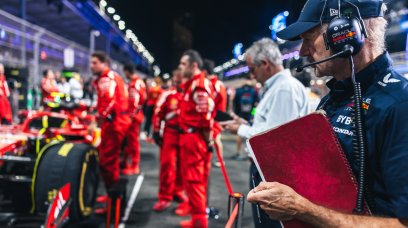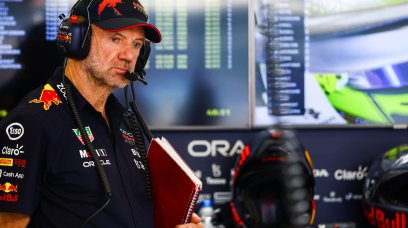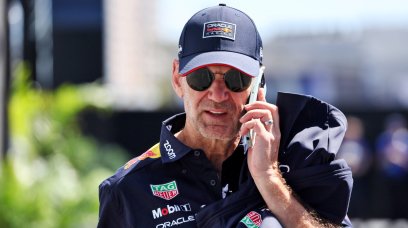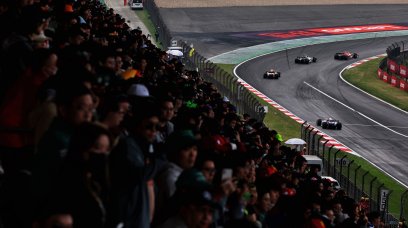For some, the American Dream is what Thomas Jefferson wrote in the Declaration of Independence: "Life, liberty and the pursuit of happiness." It is about improving your situation to build better outcomes for you and your family, believing that if the other guy can do it, then you can too. Formula 1 has been chasing its own American Dream since the World Championship was incepted back in 1950 – when the Indianapolis 500 was added to the calendar to distinctly put the 'World' in the Championship. Down the years, races have come and gone in Phoenix, Detroit, Dallas, Long Beach and again at Indianapolis (the less said about that the better), but the American enigma continued to prove to be one that F1 could just not crack. Hubris perhaps on the part of the series bosses, believing that its product – the only truly annual 'World Championship' and on par with the FIFA World Cup and Olympic Games in terms of global reach – would simply be loved by Americans and all F1 needed to do was turn up and race. To paraphrase from Kevin Costner's 1989 baseball film Field of Dreams, F1 built it – and they did not come. But F1 has finally been able claw its way into a market dominated by the NFL, NBA, MLB, NHL, as well as IndyCar and NASCAR. It now has a rapidly growing platform with which to put roots down and finally develop into what it has always dreamt of in the United States. The biggest reason? Netflix and its behind-the-scenes documentary F1: Drive to Survive.
Seeds of Drive to Survive actually sown by Amazon
Prior to F1 being taken over by Liberty Media in 2017, the series was something of a closed shop. Social media was anathema to Bernie Ecclestone, believing if it didn't attract new fans in the 1980s and 1990s, then it wouldn't in the 2010s – despite the fact it wasn't around back in the day. So strict were the rules, teams and drivers were forbidden from sharing any content from the paddock, with drivers such as Lewis Hamilton told to remove it from their accounts. But as Liberty brushed aside the Ecclestone-era, an idea for greater access was already in the works with McLaren ahead of the 2017 campaign, as F1's Director of Media Rights, Ian Holmes, picks up the story. "Amazon were talking to McLaren about their All or Nothing series, which focuses on a particular team," Holmes explained at the Blackbook Motorsport forum when asked about the origins of Drive to Survive. "When Formula 1 teams do that, they need to come to us to acquire the rights to include on-track footage etc... "We looked at it and thought it was quite interesting, and thought we could do what we may have done in the past, which is an arm's length licence, predetermined by the footage, but Liberty wanted to take a slightly different approach to it, [one that was] more inclusive. "We thought wouldn't it be better to adopt a narrative that focused on the sport as a whole, all the teams and drivers? "If we're talking to Amazon, we know that their chosen programming strategy is All or Nothing, so we talked to Netflix, explained the concept and they immediately embraced it and did the deal pretty quickly." The deal with Netflix was dependent on actually delivering the teams and access to them for filming during the 2018 season. However, Mercedes and Ferrari were not interested, as others such as Red Bull and Haas became key pivots around which the series would be based.
Slow start before realising F1's new series would be a success
"We realised the full extent of the potential was in series three, with series one being very well received," continued Holmes. "Netflix famously don't share a great deal of data, but conversationally, we had a good idea of the power it was doing. "The second series never normally rates as high as the first, with a five per cent drop off, which was normal, and series three was a 50 per cent increase – and we sat back and thought: 'That's not normal!' "I think some contributing factors over and beyond just the narrative that was in series three, I think the genre [of sports behind-the-scenes-documentaries] has grown. "[The Michael Jordan Chicago Bulls NBA series] The Last Dance, for many people was impactful. People watch Lost as soon as possible. And I think the same can be said for Drive to Survive. " What we saw was the people were engaging with Formula 1, who don't necessarily sit down on Sunday afternoon and watch Sky or ESPN or whatever it might be. Many of them now subsequently do." Perhaps the biggest standout moment from the 2020 season covered by series three was Romain Grosjean's fiery accident in Bahrain. The official F1 account has, as of 18 August, a combined 22.4 million views on YouTube across race highlights and other videos. Netflix's seven-minute clip, using footage as broadcast in the show, has 32 million views.
F1 teams are shown clips before release
One of the main controversies around Drive to Survive is its tendency to fake rivalries between drivers to help push the narrative along. For example, series three, episode eight features then-McLaren duo Lando Norris and Carlos Sainz – who had a famously strong relationship. As Sainz was off to Ferrari for 2021, the series depicted tensions between the two drivers that any casual observer of the championship would know to be false. However, Holmes says that the teams do get access to segments featuring them, but not the final cut, meaning McLaren would have been aware of the contents of the episode. "Contractually, the teams have certain very defined areas where they are allowed to request amendments and changes, areas such as anything that accidentally will be commercially insensitive at the time of release," he says. "Essentially, they cut down and produce the edits, and lift out incentives. They get to see the rushes, but they don't get to see it in the form of final cut. "No-one's going to throw anyone under a bus, but it's been a few things here and there."
Change is good as series five and six are in the works
Over the course of series two to four, Hamilton and Max Verstappen have been the main protagonists, but with Mercedes' fall in 2022, this allows new faces to be fleshed into the narrative. "The advantage we've got is that the storylines are changing. The protagonists, the drivers change, and we've seen the Team Principals seem to take a more central role over the past two series," observes Holmes. "Effectively, we're dealing with 30 people (20 drivers, 10 team bosses), and this is where we have an advantage, so you can actually go quite deep with them. "They're filming season five at the moment, so that will drop early next year, and the deal also includes season six, so we know we are going to get two more series. "If we're happy with it, people want to consume and watch it, and Netflix are happy with it, then I think we'll continue."
Most read




















